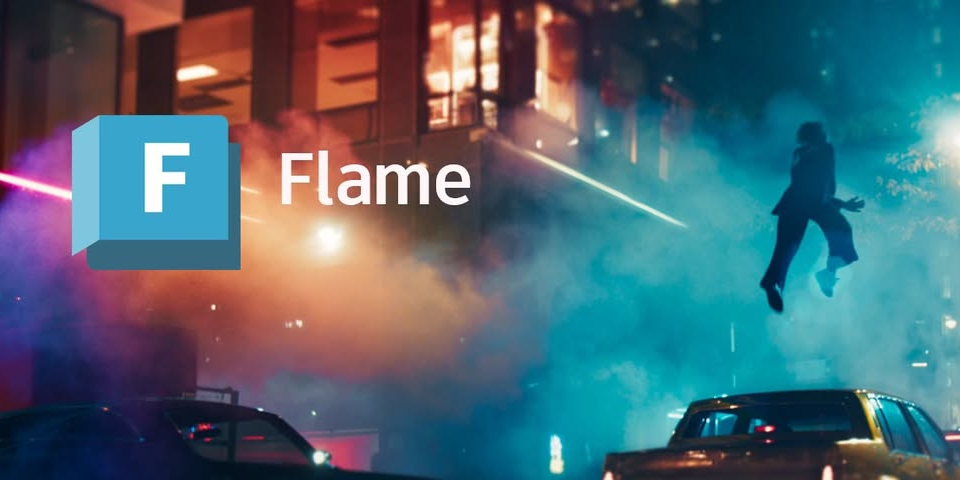Autodesk releases Flame 2026
html PUBLIC "-//W3C//DTD HTML 4.0 Transitional//EN" "http://www.w3.org/TR/REC-html40/loose.dtd"
Autodesk’s new marketing image for Flame from its social media profiles, created by Rodeo FX.
Autodesk has begun its Flame 2026 release cycle, the latest annual series of updates to Flame, its compositing, finishing and effects softwareFlame 2026 introduces support for OpenColorIO color management, a new Type tool for on-screen text, and an AI-based clip upscaling system.
Flare and Flame Assist, the cut-down editions of Flame, are also listed in the release notes, but another former Flame Family application, color grading tool Lustre, has been discontinued.
OpenColorIO replaces SynColor for color management
The headline change in Flame 2026 is support for open color-management standard OpenColorIO (OCIO), replacing the old Autodesk Color Management (SynColor) system.The move brings Flame in line with Autodesk’s other Media and Entertainment products like Maya and 3ds Max, and with other key tools in visual effects pipelines like Houdini and Nuke.
The change is backwards-compatible, with projects created in previous versions of Flame being automatically migrated from SynColor to OCIO.
New Type tool replaces the old Text tool
Other new features include the new Type tool for on-screen text and titles, replacing the legacy Text tool.According to Autodesk, it provides better workflows for kerning and styling text, better font management, and supports layer management via the Layers list.
The Type tool also integrates better into Batch, Batch FX and the Timeline than its predecessor, including support for color management, context views, and multiview.
Machine-learning-based video upscaling
Flame 2026 also introduces a new machine learning upscaling system, available in the Media Export window, and via the Resize & Crop, Render and Write File nodes.Clips can be increased in resolution by 2x, 3x or 4x; and upscaling can be performed on CPU or GPU, although GPU processing is restricted to clips with resolutions of 1,920 x 1,080px or less.
The option is currently only available on Rocky Linux, and does not support background export.
There are also new AI models for the Morph and Timewarp tools, which both got new machine-learning-based capabilities during the Flame 2025 updates.
Other workflow and pipeline improvements
Workflow improvements include a redesigned Project Management window, and new options to set file locations for a project.There are also smaller updates to Batch and Batch FX, and the MediaHub.
The Input and Output Clip modules have been deprecated.
You can find a complete list of changes, including updates to the Python API and the RAW file formats supported, via the link at the foot of this story.
Other Flame Family applications: Lustre discontinued after Lustre 2025
In related news, the Flame Family of applications has shrunk with this release, color grading tool Lustre having been discontinued after the release of Lustre 2025.The other two members of the family, Flare and Flame Assist – both cut-down versions of Flame itself – are still listed in the release notes.
Pricing and availability
Flame 2026 is compatible with Rocky Linux 8.10/9.3/9.5 and macOS 13.0+.The software is available rental-only. Subscriptions cost $640/month, up $40/year since the previous release, or $5,045/year, up $175/year.
We’ve contacted Autodesk to check the current subscription prices of Flare and Flame Assist, and will update if we hear back.
Read a full list of new features in Flame 2026 in the online documentation
Have your say on this story by following CG Channel on Facebook, Instagram and X (formerly Twitter). As well as being able to comment on stories, followers of our social media accounts can see videos we don’t post on the site itself, including making-ofs for the latest VFX movies, animations, games cinematics and motion graphics projects.


